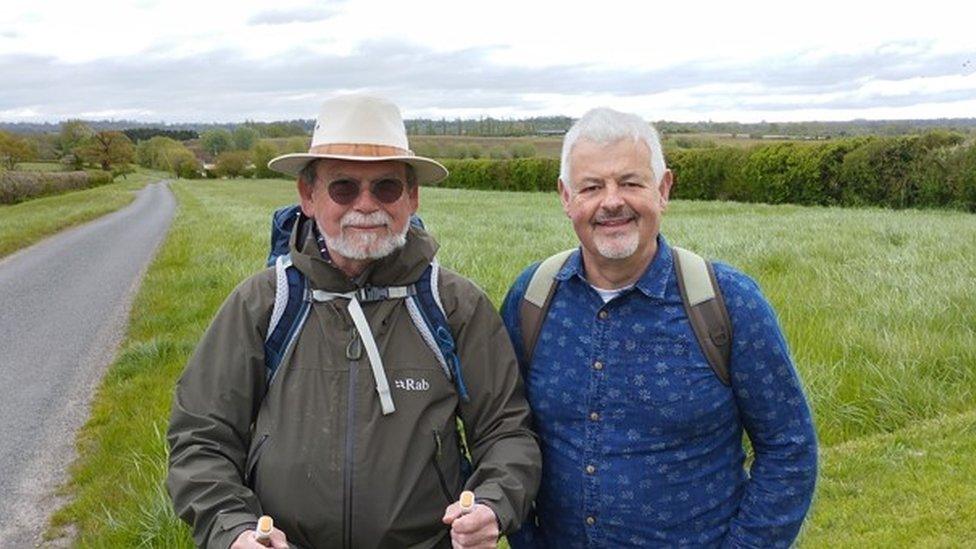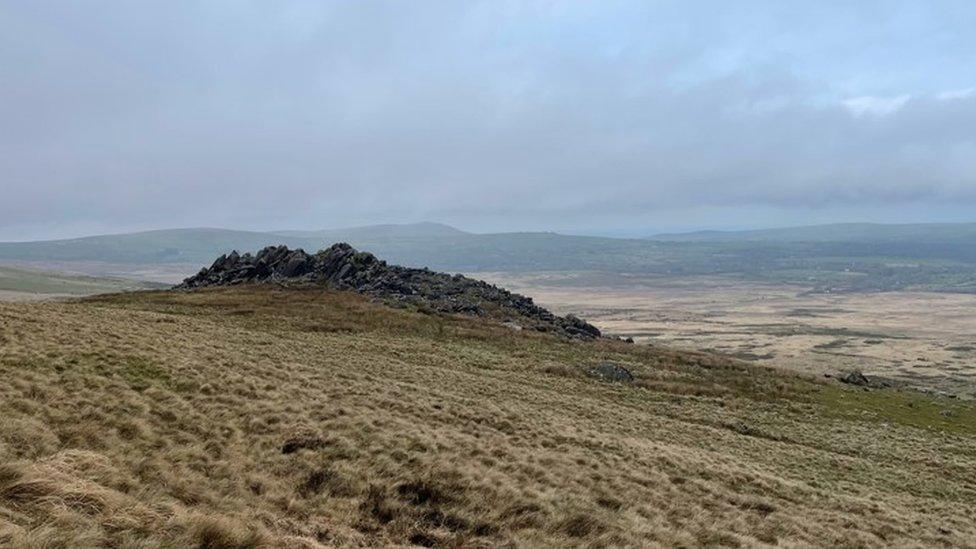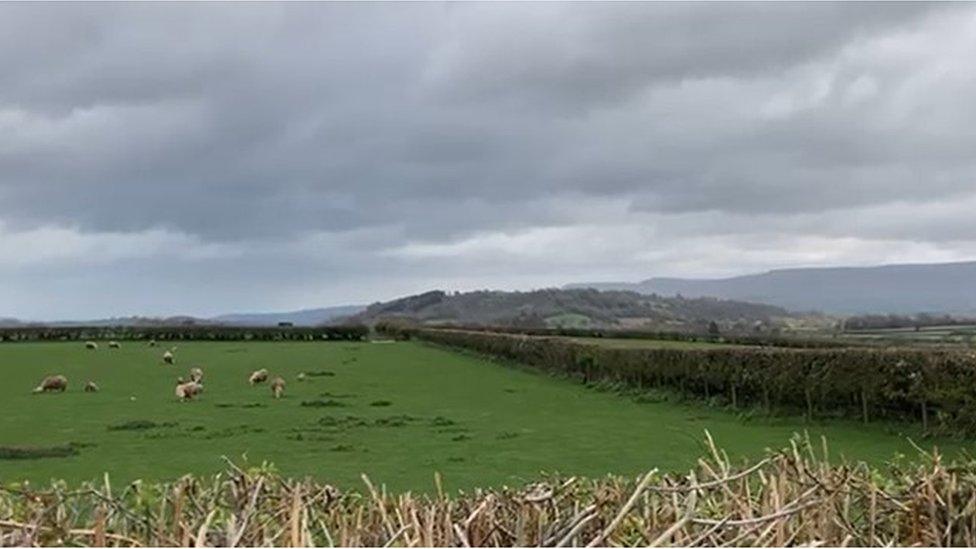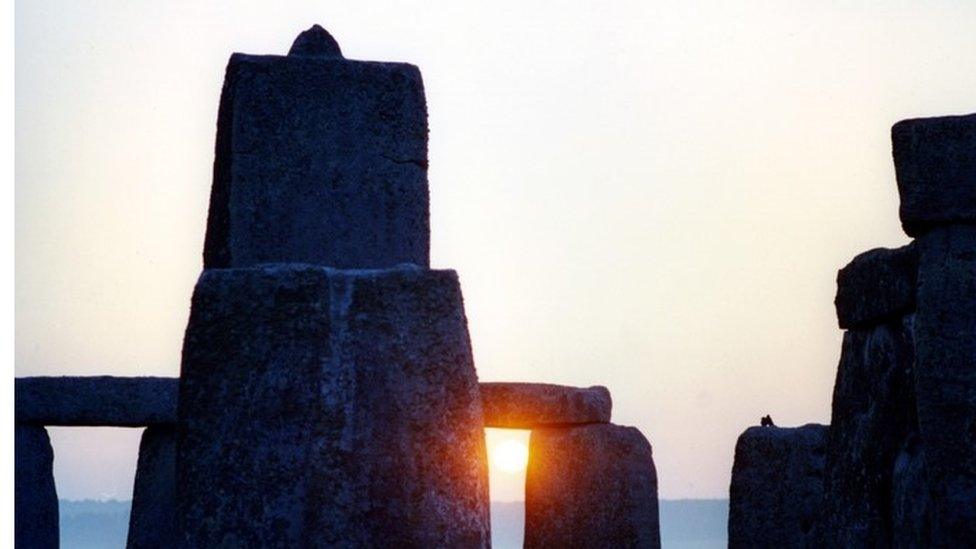Inland route to Stonehenge from Welsh quarries is 'logical'
- Published

Stonehenge was erected more than 5,000 years ago with stones quarried in Wales
A professor has undertaken what might be the first attempt at retracing the footsteps of Stonehenge's creators.
Geologists have known since the 1920s the blue stones, which form the monument's inner ring, came from the Preseli Hills in Pembrokeshire.
But no-one has tried to prove whether they might have been transported overland, rather than by water.
Professor Keith Ray says he has spent 20 days walking one potential route via Herefordshire and Gloucestershire.

Professor Keith Ray (left) was joined by Win Scutt from English Heritage on one of the final legs of the walk through the Vale of Pewsey
Initial research suggested the megaliths were taken south to the Welsh coast to be taken up the Bristol Channel on rafts.
Crossing the landscape
Professor Ray, from Cardiff University, said he decided to take on the 370 km (230 mile) walk to shed light on whether an overland route might have been feasible, by experiencing the landscape for himself.
"People have traced routes on maps and they've driven to look at locations, but no-one has actually said 'this is a route that I think is feasible and I'm going to follow it across the landscape'."

Geologists have confirmed the blue stones came from outcrops in Pembrokeshire, including Carn Goedog in the Preseli Hills
His route has passed north of the Brecon Beacons, through Hereford, Ross-on-Wye and the Forest of Dean, crossing the River Severn at Ashleworth.
"I don't like the idea of coastal routes on rafts because I know the waters around Pembrokeshire and I think that would be a non-starter. My route avoids sea transport altogether.
"I've found it quite remarkable that the route I've chosen, I would hesitate to say is obvious, but it's actually quite logical," he said.
Stonehenge is considered by experts to be very unusual in the ancient world for the distances over which its materials were transported to the site in Wiltshire.
Rocks from quarries in Wales were used in the construction of the prehistoric monument more than 5,000 years ago.
Following excavations in 2015, a team of archaeologists and geologists confirmed the stones had come from particular outcrops at Carn Goedog and Craig Rhos-y-felin.

Professor Ray's route took him past the Black Mountains at the watershed of the Rivers Usk and Wye
Significant communities
Professor Ray said he wanted to draw attention to these scientific discoveries and it was also important to consider the "whole question of Neolithic journeying and its purposes".
"I would say Neolithic people were very aware of significant communities and that's how they organized it so that they could follow a route linking with particular communities."
Heather Sebire, senior properties curator at English Heritage said: "We've never known exactly how the stones were brought from so many miles away to this ancient landscape 5,000 years ago.
"Professor Ray's endeavours will help keep the discussion around this fresh in the minds of archaeologists and the public.
"We don't think anyone has ever arrived here having undertaken a journey like this before," she added.
Professor Ray is due to complete the trek on Sunday and plans to publish his discoveries in due course.

Follow BBC Wiltshire on Facebook, external, X, external and Instagram, external. Send your story ideas to us on email, external or via WhatsApp on 0800 313 4630, external.
Related topics
- Published12 February 2021

- Published29 July 2020

- Published8 May 2019

- Published2 March 2022
